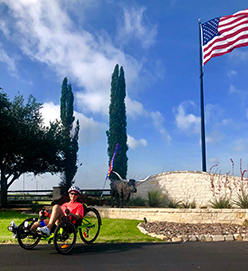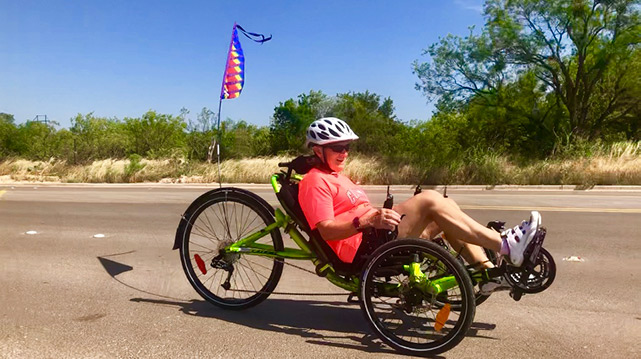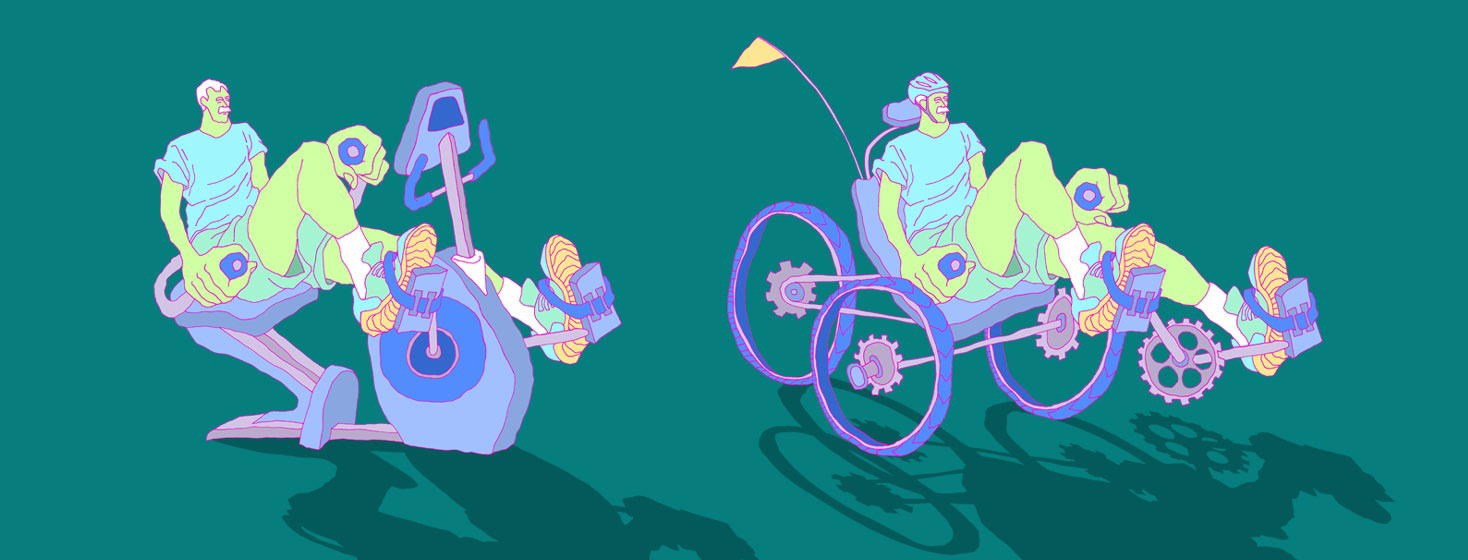Keep on Riding!
A friend and I were visiting the other day and, as often happens, we asked each other about our exercise. His favorite activity for years has been cycling.
As a cycling enthusiast, he knows that wearing bicycle shoes that clip into his pedals gives him more control and power. But, he said he was falling off his road bike more often, especially when he could not unclip his cycling shoe from the pedal as he rolled to a stop.
He moved his bike onto an indoor trainer that allows him to ride in place. Think of it as a treadmill for bikes. He still found some interesting ways to stumble or fall when getting on or off the bike.
He has not yet ruled out riding his road bike. Are there other cycling options if/when he decides to look into them? Yes!
Cycling options
He may choose to pedal an indoor stationary bike in standard or recumbent position, but that would mean going to a local gym. Outdoors, he can ride his mountain bike or hybrid, especially if he will use the flat pedals.
There are tandem bikes, recumbent tandem bikes and trikes, adult trikes, and recumbent bikes or trikes. I am sure there are even more styles I do not know about.
He ended our conversation with a stern statement that he was not ready to give in to Parkinsons’s when it came to his bike. Transitioning off of your favorite bike can be a difficult concession.
Selecting a trike
I felt that way at first. My husband and I were tired of the fall risk. His bad knees and my balance and strength changes motivated us to find a new set of wheels, 3 of them per bike!
 We located some recumbent trike dealers within a reasonable driving distance. We learned what we could online, from recumbent riders, and then visited more than one store to see what was available.
We located some recumbent trike dealers within a reasonable driving distance. We learned what we could online, from recumbent riders, and then visited more than one store to see what was available.
After choosing the store we liked best, we test rode different models and learned a lot. We were fortunate to see firsthand the extra value offered by working with a long-time dealer who stocked a large number of brands and models.
We were also fortunate to be able to buy new recumbent trikes and both chose a tadpole style. Tadpole recumbents have 2 wheels in front and 1 in the rear (a delta recumbent trike is the opposite).
How to decide on a bike
Factors affecting our trike selection were height, weight (ours and the trike’s), wheelbase, seat position and comfort, the types of roads and road surfaces we expect to ride on, suspension, wheel size, tires, and desired speed.

There are more options that make a recumbent trike adaptable as your Parkinson’s progresses. Electric assist (educate yourself on pros/cons of hub motors versus mid drives), exit assist bars, and other modifications may keep you riding long after you give up your 2-wheeler.
Pros and Cons
Since the trike has 3 wheels, I will share 3 pros and three cons I have found.
Pros:
- Easier to balance
- Comfortable seat and sitting position
- Exuberantly fun!
Cons:
- Cost
- Traffic safety
- Storage space - trikes are obviously wider than 2-wheelers
Can you do anything about the cons? Cost can be reduced if there is a trike you like from last year’s models or you find a used one (buyer beware).
A bright flag, flashing taillights and a headlight increase your visibility out on the road. I also wear a very bright shirt or jacket. You will make space in your garage for the width of your trike if you want to. Correct?
Happy with the purcahse
There are many trike brands, but I want to mention one. Catrike supports rideATAXIA, the Davis Phinney Foundation for Parkinson’s, and Project Hero as part of their commitment to the pursuit of a better quality of life.
I am glad I brought a recumbent trike into my life. It has allowed me to keep on riding!

Join the conversation